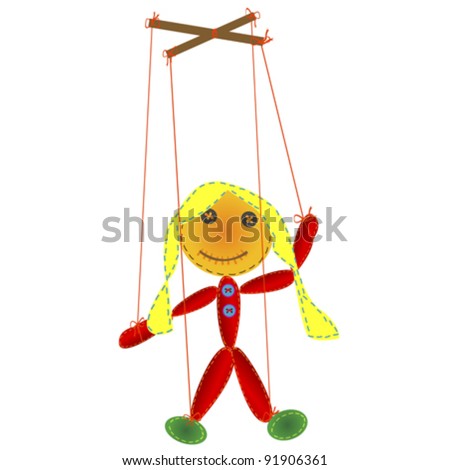6 Questionable Historical Methods of Controlling Children

If, after an exhausting day of parenting, you’ve ever wondered how people in decades past managed to juggle their jobs, housework, and crying children without things like iPads, microwave ovens, or Amazon Prime, well … it turns out they had a few childcare shortcuts of their own. Here are some of the stranger tricks of the parenting trade that people once used when their kids were acting up. (Or just when they needed to get things done.)
1. BABY CAGES
Invented in the 1920s for the purpose of “airing your baby” in order to “renew and purify the blood,” baby cages came into vogue in 1930s London among apartment-dwelling parents who didn’t have a yard for their kids to play in. The contraption was literally a cage made of wire with a flat base attached to the outside of a window, like an air conditioner or a flower box. Purified blood aside, they may have also caught on when people realized that you could just put your kid in there and go about the rest of your day—all in the name of good parenting.
2. MORPHINE-LACED SYRUP
Mrs. Winslow’s Soothing Syrup was a favorite babysitter of Victorian mothers, possibly because its primary ingredients were morphine and alcohol. Turns out, if you want your kids to be quiet, morphine works really well. That said, it’s a little unfair to only call out Mrs. Winslow here, because opium was also the secret ingredient in at least 100 other over-the-counter syrups, tonics, and medications of the era, some of which were sold as late as the 1930s.
3. CHILD SAFETY HARNESSES
In case you’re not familiar, this is just a harness and leash for your child, like the kind you’d use to walk a dog. Child harnesses saw their heyday in the 1980s, but they go back a lot earlier than many people realize: Although the original patent was filed in 1920, the future Louis XV of France is depicted wearing one in an early 18th-century painting. They’re still used today too, of course, although overall parents try harder to avoid the impression they're treating their children like pets.
4. COCAINE
Like opium, cocaine was used in hundreds of pharmaceutical products in the late 19th and early 20th centuries, and it certainly wasn’t confined to adult use. Cocaine toothache drops were aimed at parents, particularly for use with teething babies, and the package included instructions on dosages for kids. Even coca wine (the wine-cocaine beverage popular in the 1800s) was sometimes marketed specifically at children.
5. MUSTARD NIPPLES
In some areas of medieval Europe, when faced with the task of weaning a reluctant child from its mother’s (or wet nurse’s) breast, doctors sometimes advised women to apply mustard to their nipples, for the same reason that nasty-tasting fingernail polish might deter a nail-biter. Bitter aloes—a genus of the aloe plant—was also sometimes used.
6. CAUTIONARY TALES
Cultures around the world have cooked up a multitude of tales meant to scare kids into behaving. In the mid-1800s, Germans had Der Struwwelpeter (or Shockheaded Peter), an illustrated children’s book wherein a girl burns herself to death after playing with matches, a boy dies of starvation when he refuses to eat his soup, and a menacing tailor cuts a kid’s thumbs off as punishment for sucking them. Meanwhile, since the 13th century, tales of the giantess Grýla have terrified Icelandic kids into behaving, lest they become her afternoon snack. In Brazil, every kiddo knows about Cuca, the anthropomorphic crocodile lady who will snatch them up if they’re not good. And just about every culture has some kind of boogeyman, including Mètminwi in Haiti (a slender giant with long, thin limbs whose name is a play on the French for "Master of Midnight") and the namahage in Japan (a demonlike being), to name a few.
Article Source: http://mentalfloss.com/article/92373/6-questionable-historical-methods-controlling-children
Image Source: https://thumb7.shutterstock.com/display_pic_with_logo/532393/532393,1325629333,7/stock-vector-handmade-marionette-puppet-on-a-string-91906361.jpg
VOCABULARY WORDS:
1. Contraption (n.) ~ a machine or device that appears strange or unnecessarily complicated, and often badly made or unsafe
2. Opium (n.) ~ a substance derived from the poppy plant and used in the production of various street drugs and medical pain relivers such as Morphine
3. Harness (n.) ~ piece of equipment with straps and belts, used to control or hold in place a person
4. Heyday (n.) ~ the stage or period of greatest vigor, strength, success, etc.
5. Wean (v.) ~ accustom (an infant or other young mammal) to food other than its mother's milk
6. Deter (v.) ~ discourage (someone) from doing something, typically by instilling doubt or fear of the consequences
7. Menacing (adj.) ~ suggesting the presence of danger threatening
8. Anthropomorphic (adj.) ~ a non-human object with human characteristics
QUESTIONS FOR DISCUSSION:
1. What are the different ways of controlling children in history mentioned in the article? Describe each one briefly.
2. Nowadays, what are the different ways of parents to control their children? Give some examples.
3. In Korea, are there some scary stories told to children to make them behave better? Please tell me one.
4. What are the possible bad impacts of telling scary stories to children?


